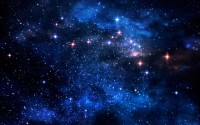Huon hill Stargazing Night Grade 1 - 200 metres

From July 27, 2018 8:30 pm until July 27, 2018 10:00 pm
At Huon Hill
Posted by Dianne Ross
dianneross007@gmail.com
0412 899 697
Categories: EveningWalking
Hits: 8664
Hi folks
Join Petra - local amateur astronomer
for a night of gazing at the Moon, Planets and some deep sky objects outside of our universe.
Weather dependant of course
What to bring:
Dress warmly, bring a chair, pair of binoculars (optional), head torch with red cellophane over the white light.
More details…
What are the special events and highlights in July 2018?
July this year is a planetary bonanza with five naked-eye planets all visible at once; Mars at its best since 2003 and Venus is dominating the western horizon.
Let’s begin with the Moon phases. The month begins with a Last Quarter Moon on Friday 6th at 5:51pm. New Moon falls on Friday the 13th at 12:48pm. We will be stargazing when the moon is at First Quarter on Friday 20th at 5:52am. And finally Full Moon occurs on Friday 27th July at 6:20am.
The Moon is the brightest object in the night sky when it is up, and no matter what phase it is in, it’s well worth observing its changing phases or looking closely at the craters, plains and other features with binoculars or a telescope. But to get the best views of the Milky Way and the constellations it is best to avoid moon-lit hours. We will have the moon at first quarter, and even though it is bright we will still be able to see planets and some bright deep sky objects.
And now the Planets….Venus is the evening planet at present shining brightly (brighter at night than anything except the Moon) in the western sky after sunset.
Venus is joined in the evening sky by Mercury (low in the west), and Mars, Jupiter and Saturn. From the July 14 through to July 23 all five naked-eye planets plus the Moon will be visible in the evening sky at once.
Mars is at its closest and brightest to Earth and, through a telescope, looks larger than it has at any time since 2003 and it won’t look this good again until 2035 – 17 years from now. We might see the polar icecaps, surface features and maybe even a dust storm. Its one not to miss.